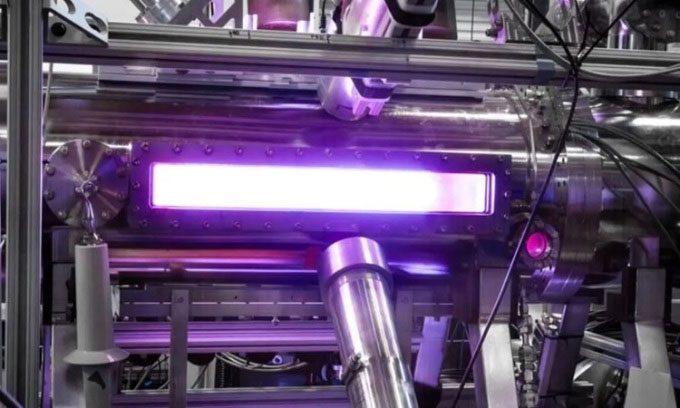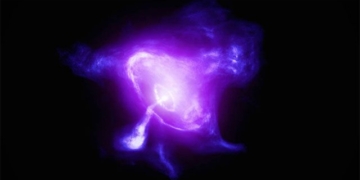FuZe is a compact, affordable device capable of achieving fusion energy temperatures rapidly, meeting future human electricity demands.
A compact device developed by the fusion energy startup Zap Energy in the United States reaches electron plasma temperatures of approximately 1 – 3 keV, equivalent to 11 – 37 million degrees Celsius, as reported by Interesting Engineering on April 23.

Plasma flash from the FuZe device. (Photo: Zap Energy).
For nearly a century, humans have researched fusion reactions, with only a few technologies achieving plasma temperatures above 15 million degrees Celsius, the temperature found at the core of the Sun. As the world seeks cleaner solutions to meet energy demands, fusion reactions are viewed as a viable way to generate large amounts of energy. The first step in the process is producing plasma, a fourth state of matter where electrons do not remain in atomic states but drift freely. The process of atomic fusion releases energy that is 10 million times greater than that of coal. However, because fusion plasma consists of two components (nuclei and electrons) with significantly different masses, they heat up and cool down at different rates. Fast-cooling electrons can limit the heating of the plasma, creating a barrier in the development of fusion reactors.
The Advanced Research Projects Agency-Energy (ARPA-E) of the U.S. Department of Energy funds research on this issue at the University of Washington. From this research, Zap Energy was founded in 2020, utilizing an idea to stabilize plasma known as the Fusion Z-pinch Experiment (FuZe) to ensure that electrons do not cool rapidly. According to their method, an electron beam passes through thin plasma filaments, generating an electromagnetic field that heats the plasma while compressing it. However, the challenge with this method is that the plasma only exists for a short time. Zap Energy addresses this limitation through a process called sliding stabilization.
Now, researchers can measure the separate temperatures of the nuclei and electrons in the plasma. Zap Energy collaborates with researchers at the Lawrence Livermore National Laboratory (LLNL) and the University of California, San Diego (UCSD) to measure the temperature of electrons from FuZe.
In the Thomson scattering method, the research team fires extremely fast green light pulses into the plasma. They measure the scattering of electrons and their temperatures. Measurement results confirm that electrons in FuZe plasma are as hot as the nuclei, maintaining a healthy thermal balance. Unlike other fusion technologies, FuZe does not require superconducting magnets or extremely powerful lasers to create plasma, making it cost-effective.
The research on FuZe was published in the journal Physical Review Letters. The research team has embarked on a follow-up project called Fuze-Q, which has a power capacity 10 times greater than FuZe and can achieve much higher temperatures.




















































